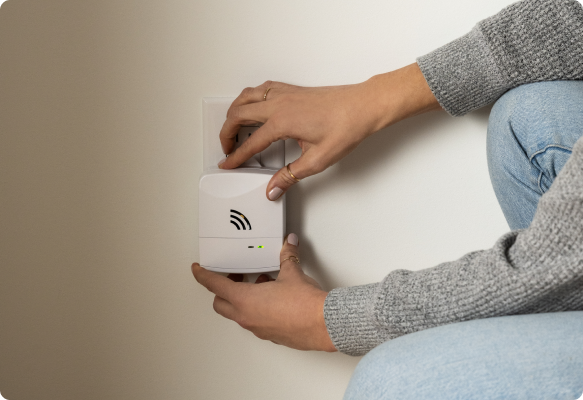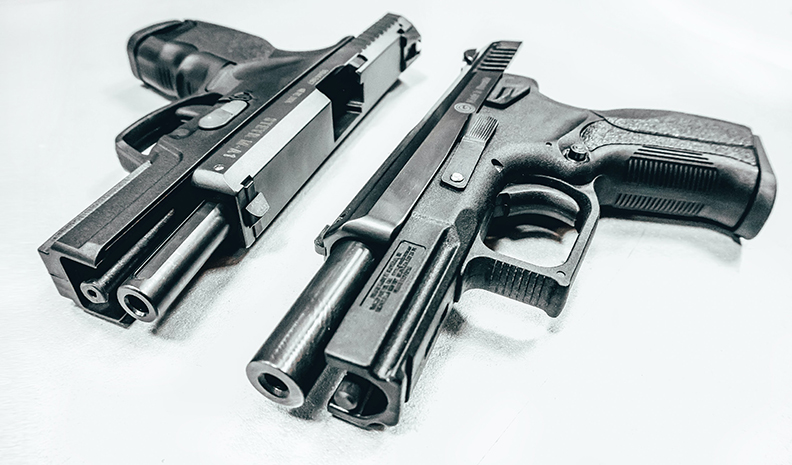Do I Really Need Door and Window Sensors?
As technology continues to advance, home security systems have become an integral part of safeguarding our homes and loved ones. Window sensors and door sensors are often touted as essential components of these systems.
But the question lingers: Do you really need window and door sensors as part of your home security system? In this article, we'll explore the importance of these sensors and whether they are important for your security needs.
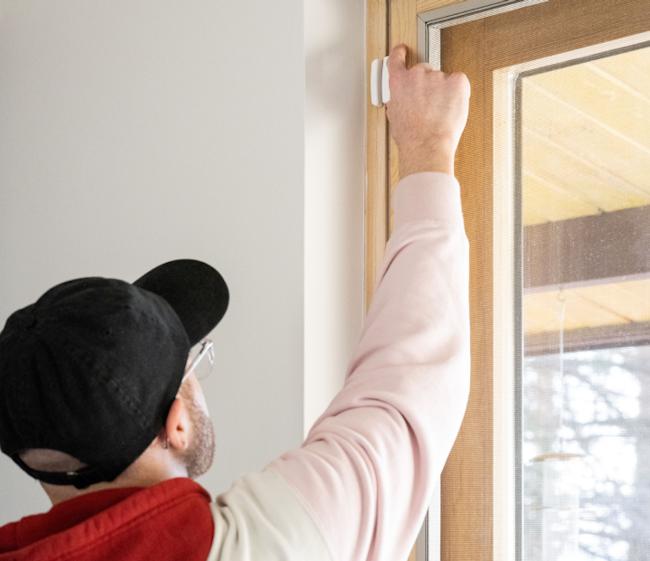
What Are Window and Door Sensors?
No alarm system is truly complete without door and window contact sensors. These devices operate on the frontlines of your home and almost always act as the first line of defense against unwanted intruders.
Window and door sensors are devices designed to detect unauthorized entry or access through windows and doors. If the alarm is armed and any monitored door or window is opened, the sensor will send a signal to the system’s main control panel, causing the alarm to ring, thus deterring the intruder from your property.
Of course, you should always lock your doors and windows. But sometimes people forget, or burglars find a way to pick locks or dismantle locks, or even break glass to gain access to the locking mechanism. That's why Cove likes to think of sensors as being even "better than locks." Because while locking your doors and windows is essential, with window and door sensors, you'll be notified by Cove's monitoring team when someone tries to gain access.
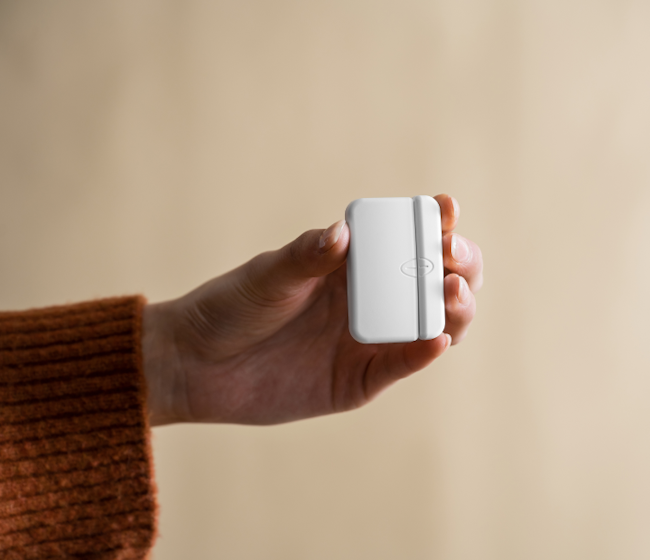
How Do Window and Door Sensors Work?
These devices typically consist of two main components: a sensor installed on the window or door frame, along with a magnet on the corresponding moving part (window or door). When the two components are in close proximity, the system registers the area as secure. However, when the window or door is opened, the connection is broken, triggering the alarm.
More specifically, these sensors usually consist of two parts: one placed on the edge of the door or window, and one placed on the door or window frame, both within about 2 inches or less of each other. If the space between the two pieces widens, the closed circuit between them is opened, triggering the alarm. Sound complicated? Well, all you need to worry about is placing them at the entry points you deem most appropriate.
Some may wonder if they need window and door sensors if they already have doorbell cameras or other security cameras. The answer is, yes! While security cameras do a great job of detering criminals or picking up movement, burglars may be on the lookout for cameras and will do their best to avoid a camera's watch zone. That's why it's important to have backups like sensors, to make sure the entry points are well covered.
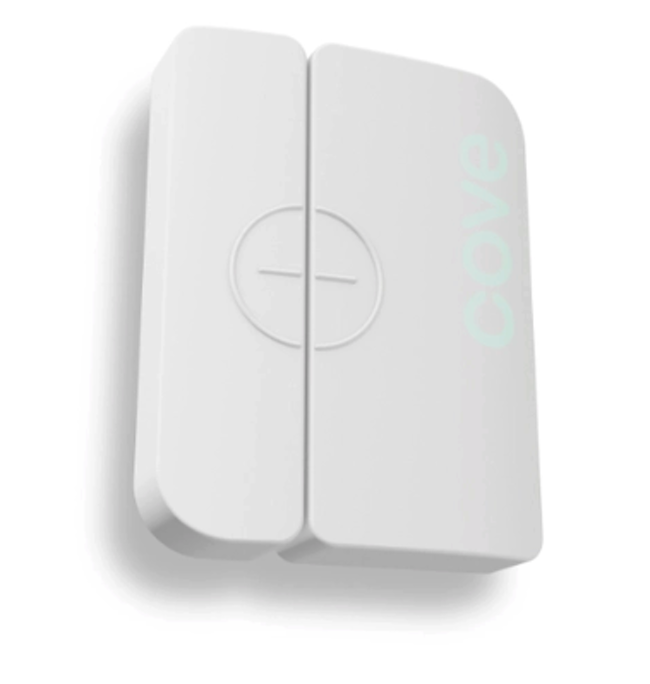
How Many Window and Door Sensors Do I Need?
The smartest approach to home security is looking at typical behavior of criminals looking to break into a home. Much of the time, they'll look for the easiest way into the home so they can steal something of value and leave as quickly as possible, so they won't get caught. The FBI reports that house break-ins last on average less than 10 minutes.
A surprising 34% of burglars get into homes right through the front door, the National Crime Prevention Council reports. According to Cove's survey of people who have experienced a break in, the majority of the points of entry were front doors, backdoors, and first-floor windows.
At Cove, we recommend placing sensors on every exterior door of your home or apartment, as well as every first-floor window, along with any other windows that have easy access from the outside. So the answer to how many window and door sensors do you need will depend on your individual dwelling.
Thankfully, when purchasing equipment from Cove, you'll find our window and door sensors are very affordable.
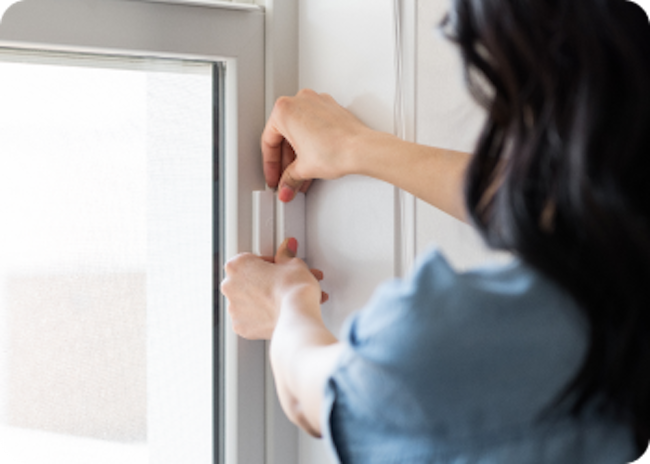
Installing Cove's Window and Door Sensors
Thankfully, door and window sensors are light, sleek, and unobtrusive to your home’s layout and décor. They are designed to not be too noticable, plus they're designed to be easy to install.
Cove's window and door sensors are part of its DIY home security system. You can simply peel and stick each sensor device to surfaces yourself with a firm adhesive applied on the back. Battery life for these types of sensors can last 3 to 5 years, and switching batteries out when it’s time is an easy feat.
When you install your sensors, the Cove panel will prompt you to name the different sensors. This will further help you know exactly where an intruder is trying to gain access to your home.
What Happens When a Door or Window Sensor is Triggered?
When you install a home security system from Cove that includes window and door sensors, you'll connect them with the control panel as well as the app on your phone. When you "arm" your system--whether you're home or away--if someone tries opening your doors or windows, you'll receive an alert in three ways: the panel, a text, and the app. You will have a short time to respond to this potential threat, letting Cove know if it's a false alarm or if someone is indeed trying to break in.
If you do not reply, Cove will automatically dispatch emergency services to your home. Since Cove uses RapidSOS, police and fire can receive your information more quickly and accurately so they can respond to your emergency.
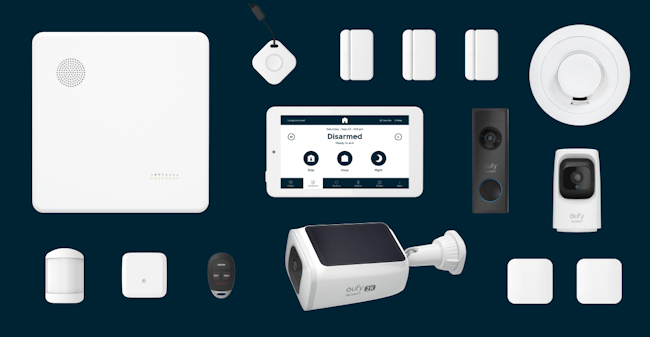
Do you really need window and door sensors? We hope that by reading this article, the answer is an obvious YES. Protecting your home with a security system that includes cameras and sensors helps to cover all the bases, especially where criminals try to gain access the most. For just a few dollars added onto your purchase of a home security system, why wouldn't you include a few sensors?
Ready to give Cove a try? Our 60-day money-back guarantee allows you to try it out before committing. Cove never requires contracts, and our monitoring services cost less than $1/per day. Click below to take our quiz and build your custom system, including window and door sensors.
Ready to get started?
Take this short quiz to build your customized system today!
Takes less than a minute

